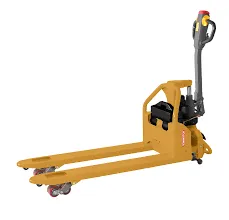


Safe Use of Chain Blocks A Comprehensive Guide
Chain blocks, also known as chain hoists or chain tackles, are essential tools in various industries, including construction, manufacturing, and maintenance. They are used for lifting and lowering heavy loads with ease, but with this capability comes the responsibility of using them safely to prevent accidents and injuries. This article provides a comprehensive guide to the safe use of chain blocks, outlining best practices and essential safety measures.
Understanding Chain Blocks
Chain blocks operate on a simple mechanical principle they utilize a chain and pulley system to lift and lower heavy objects. The load is connected to the hook, and by pulling the chain, the operator can lift the load vertically. This versatility makes chain blocks an indispensable tool, but improper use can lead to serious workplace hazards.
Safety Guidelines for Using Chain Blocks
1. Inspect Before Use Always perform a thorough inspection of the chain block before each use. Check for any signs of wear or damage, such as frayed chains, cracked hooks, or malfunctioning gears. If any issues are detected, do not use the chain block until it has been repaired or replaced.
2. Choose the Right Capacity Each chain block has a specified lifting capacity that should never be exceeded. Ensure that the load does not exceed the rated capacity to prevent failures and accidents. If in doubt, consult the manufacturer’s guidelines.
3. Positioning Ensure the chain block is positioned directly above the load for balanced lifting. This helps to maintain stability and prevents the load from swinging during the lifting process.
4. Use Proper Rigging When lifting loads, use appropriate rigging techniques. Attach the load securely to the hook, ensuring it is centered and balanced. Utilize slings or other rigging equipment that are rated for the specific load being lifted.

5. Avoid Side Loading Never allow the chain block to be subjected to side loading. Chain blocks are designed for vertical lifting, and any sideways force can cause damage to the mechanism or lead to failure.
6. Clear the Area Before lifting, ensure the area beneath the load is clear of personnel and obstacles. This minimizes the risk of injury in case the load shifts or falls.
7. Proper Training Only trained and authorized personnel should operate chain blocks. Ensure that all operators understand the equipment’s capabilities and limitations, as well as the appropriate safety protocols.
8. Use Personal Protective Equipment (PPE) Operators and those working in the vicinity of lifting operations should wear appropriate PPE, including hard hats, safety glasses, and steel-toed boots, to protect against potential hazards.
9. Implement Safety Signals When lifting heavy loads, establish clear communication signals among team members. Use verbal commands or hand signals to ensure everyone is aware of the lifting process and any potential hazards.
10. Regular Maintenance Schedule regular maintenance and servicing of chain blocks to ensure they remain in good working order. This includes lubrication, adjustments, and replacing worn parts.
Conclusion
The safe use of chain blocks is crucial for maintaining a secure working environment. By adhering to the guidelines outlined above, operators can significantly reduce the risk of accidents and ensure the efficient handling of heavy loads. Remember, safety should always be the top priority when using any lifting equipment, and fostering a culture of safety among all personnel is key to preventing workplace incidents.



